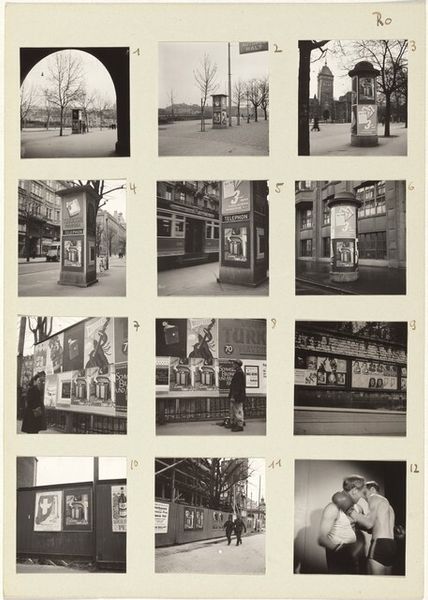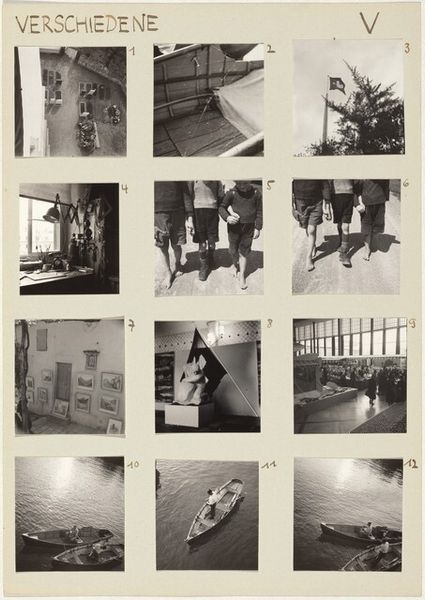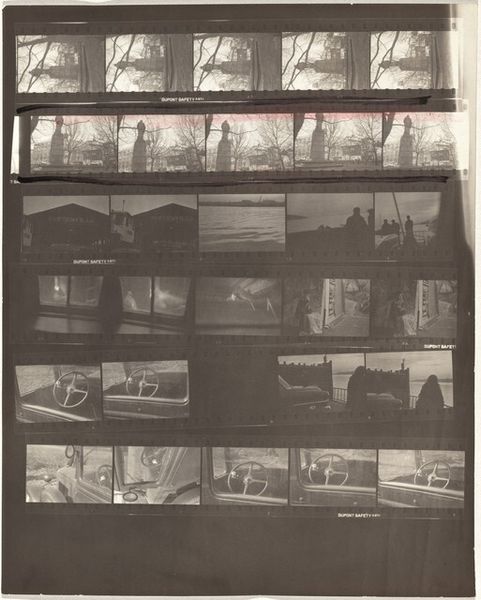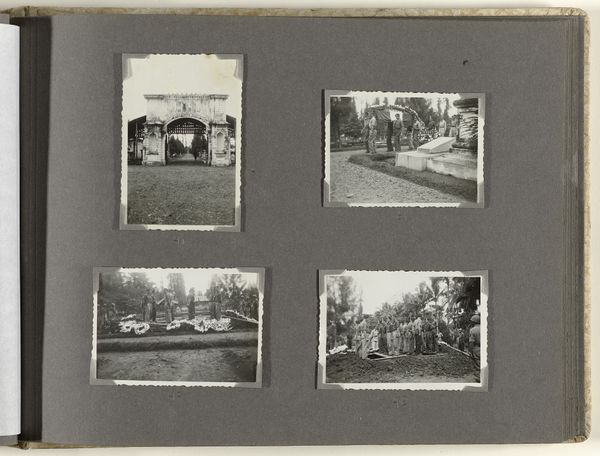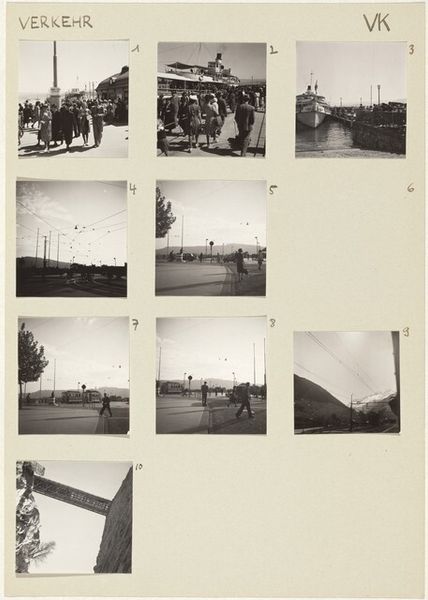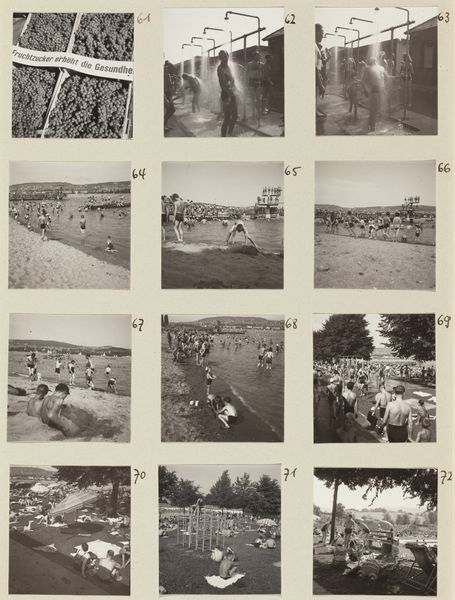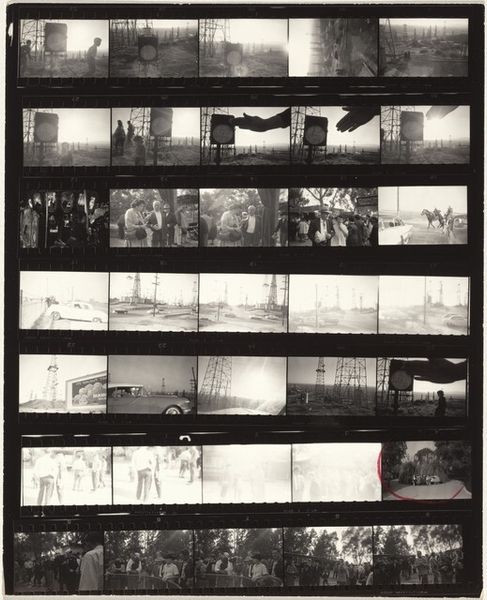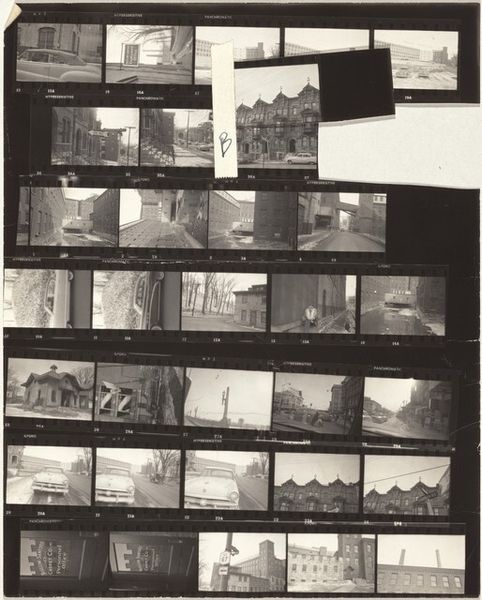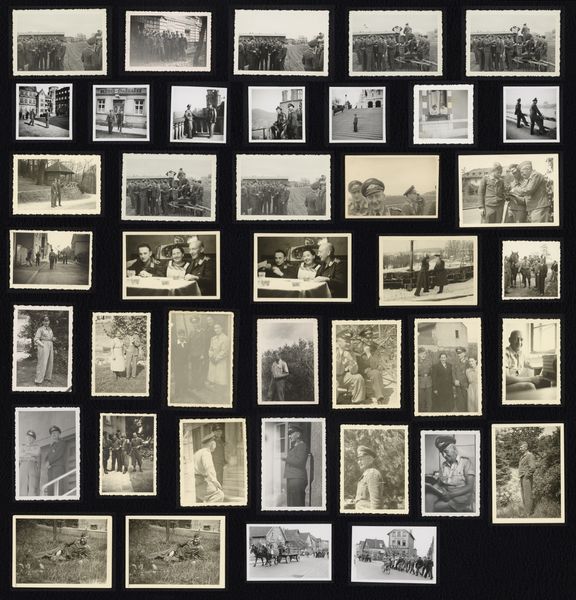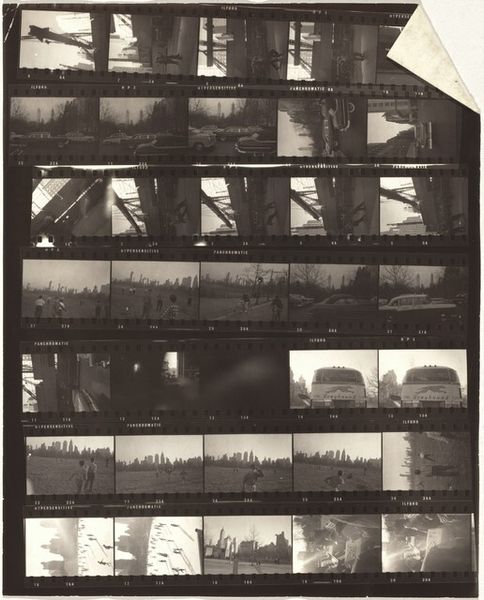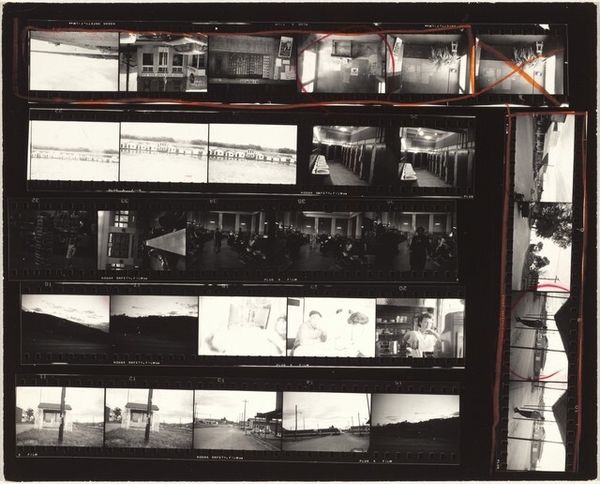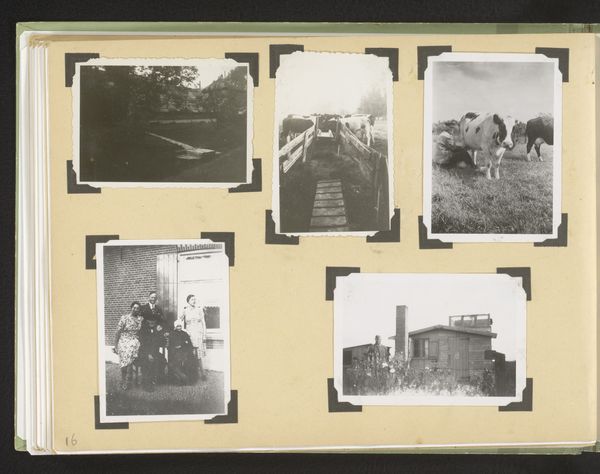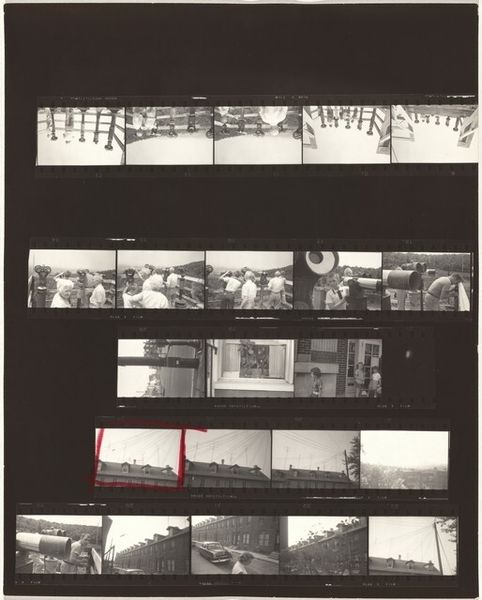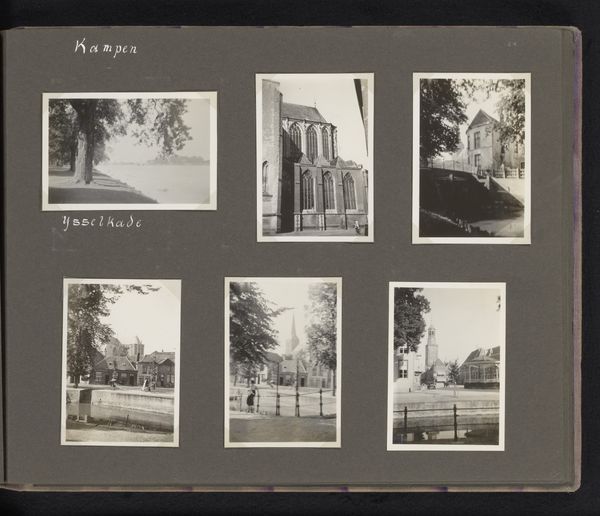
photography
#
landscape
#
street-photography
#
photography
#
cityscape
Dimensions: sheet: 29.6 x 21 cm (11 5/8 x 8 1/4 in.)
Copyright: National Gallery of Art: CC0 1.0
Curator: At first glance, there’s a certain quietness to this composite, like a melancholic stroll through a city holding its breath. The varied scales of each snapshot contribute to this disconnected atmosphere. Editor: This is “Zürich 1-12”, a photographic work made by Robert Frank between 1942 and 1946. It's fascinating how Frank, a Swiss photographer deeply influenced by his European experience and later by American society, captures Zurich not as a grand metropolis but as a collection of fragmented scenes, almost like visual footnotes to a larger narrative. Curator: The fragmentation really strikes me; each image is its own mini-narrative, yet they exist together. This was during the Second World War years, but instead of overt political messaging, we find a quiet documentation of everyday life—children peering behind news-stacked windows, barren landscapes, canals—an almost stubborn refusal to acknowledge the chaos erupting elsewhere. It is a subtle, insistent visual poem. Editor: Absolutely. We should remember how photographic practice in this era was still heavily shaped by ideas of objectivity and documentation. However, Frank infuses these seemingly straightforward observations with a subjectivity that foreshadows his later, more celebrated work in America. His positioning as a Swiss Jew, an outsider observing his own community in wartime, likely imbued his perspective with additional layers of meaning. Curator: It makes you consider ideas of neutrality and whether that’s ever really achievable in any recording of an event or place. Frank seems to be hinting at a collective consciousness, revealing how societal and political anxieties become ingrained even in mundane activities. He really gives voice to what it meant to be still in times of unrest. Editor: I agree, this piece anticipates his exploration of identity and social commentary, which makes this early composite feel both intimate and historically significant. We are witnesses of everyday lives as symbols, archetypes of this era and place in time. Curator: Considering the socio-political context really enriches the reading of what otherwise appears like a modest assortment of street photography. It feels like a poignant prelude to the artist’s later, louder commentary on society. Editor: And that intersection between Frank’s own biography, photographic history, and wartime experiences provides an intriguing, complex perspective on a seemingly placid city.
Comments
No comments
Be the first to comment and join the conversation on the ultimate creative platform.
